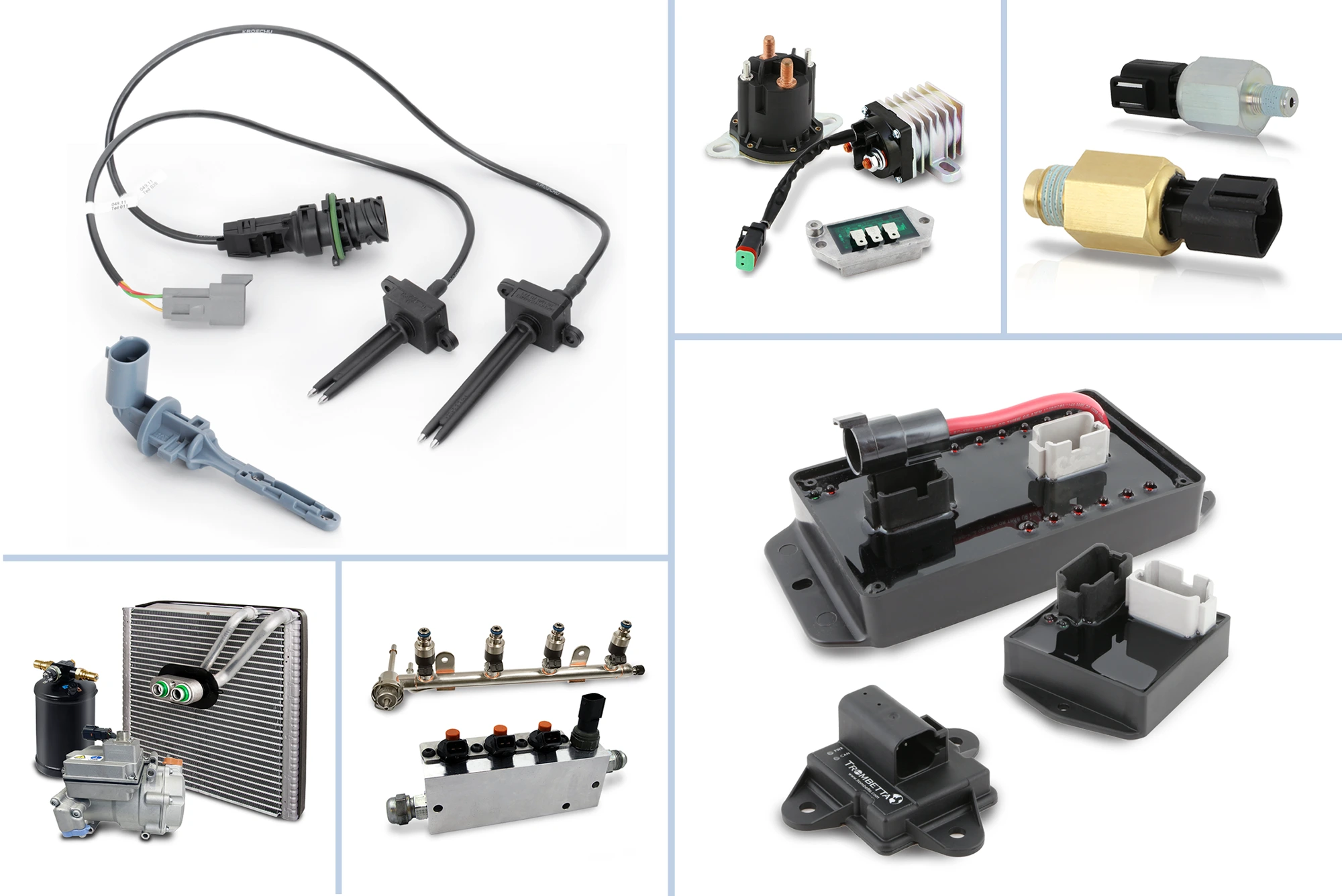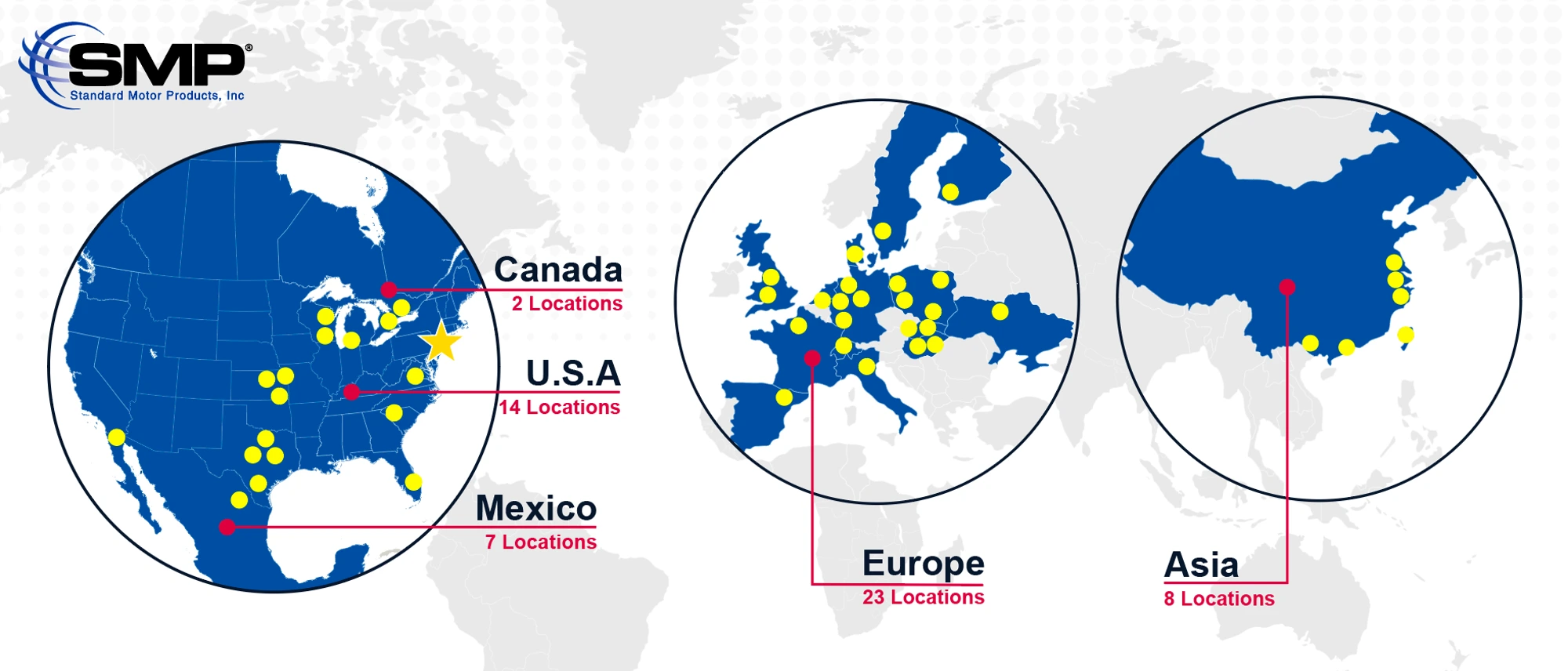Standard® Training
Professional automotive training when you want it, where you want it, and how you want it. Standard® delivers the in-person, live-virtual, and online training courses technicians have asked for. Standard® training is supported by an extensive library of videos, technical articles, and more from the industry’s most awarded training team.
Award-Winning Professional Automotive Training
Standard® Training educates technicians in the latest automotive repair technologies through in-person, live-virtual, and on-demand online classes. In fact, each year, we train more than 60,000 technicians. Taught by professional trainers who are experienced ASE-certified automotive technicians themselves, our ASE-accreditation allows techs to earn continuing education credits (CEU).
"The type of vehicles we used in today’s training are vehicles I see and work on everyday. I will use this training and apply it to my vehicle diagnoses, especially when using the in-cylinder pressure testing."
SMP® Pro Training Attendee
Standard Insights
This advanced series of technical articles explores how specific systems work on today’s complex vehicles. A great resource for technicians and parts professionals, these illustrated articles provide a detailed explanation of individual components and how they work together within each vehicle system.
Training Videos
An extension of Standard® tech training, our extensive ADA-compliant YouTube video library of product support and professional installation videos has over 40 million views and more than 50,000 channel subscribers. The go-to resource for technicians and parts professionals, users can filter by product category and video type to help them quickly find the information they are looking for.
Viewing video(s) 1-277 of 277

No results found
Standard® Pro Training Power Hour
Each month, our professional trainers share technical information and diagnostic tips in a free, live-virtual training session. Standard® Power Hour live interactive sessions allow participants to ask questions in real time. Register for upcoming live courses or watch past classes on-demand.
Upcoming Sessions
Upcoming
Wednesday
August 13
12:15PM Eastern
Ignition Coil Diagnostics
Upcoming
Wednesday
September 10
12:15PM Eastern
VVT Diagnostic Tips
Upcoming
Wednesday
October 08
12:15PM Eastern
Blend Door Diagnostics and Calibrations
Upcoming
Wednesday
November 12
12:15PM Eastern
Modern PCV Systems Explained
Upcoming
Wednesday
December 10
12:15PM Eastern
Internal Door Diagnostics - Lock Actuators, Power Windows, Switches and Modules
Recorded Sessions
Viewing video(s) 1-21 of 21

No results found
Vehicle Indicator Lights
Vehicles have changed, and so have indicator lights. Here’s a detailed sampling of vehicle warning lights to help explain what they mean, what may be wrong with a specific vehicle, and which systems are affected.
ABS System
The anti-lock braking (ABS) system prevents a vehicle's wheels from locking, helping to avoid skipping and to retain control over skidding. This light indicates that the ABS computer has set a code and needs professional diagnosis.
Airbag Fault
If this light stays illuminated after starting it indicates that the vehicle has found a fault in the airbag system and the computer has set a code. Professional repair of the supplemental restraint system is highly recommended.
Active Lane Departure
A Lane Departure warning system is intended to prevent accidents resulting from unintentional lane drifting or departure. This system detects lane markers, and alerts when a tire comes into contact with one. The warning can manifest as a flashing light, a beeping sound, or a gentle vibration in the steering wheel.
Active Driver Assist
Active Driving Assist (ADA) is a driver assistance feature that helps control a vehicle's steering, acceleration, and deceleration. It may also include lane centering assistance (LCA) and adaptive cruise control (ACC). This light indicates that ADA is active.
Automatic High-Beam Lights
This light indicates that Automatic High-Beam Lights are on, meaning that the system will automatically switch between low and high headlight beams based on sensors' detection of oncoming vehicle headlights or taillights.
Auto Start/ Stop
The Auto Stop/Start feature automatically turns off and restarts a vehicle's engine to decrease fuel consumption and emissions. It operates by shutting off the engine when the vehicle comes to a stop and restarting it when the brake pedal is released or the accelerator is pressed. A green indicator light illuminates when the engine is temporarily off due to the Auto Stop/Start system and turns off when the engine restarts.
Attention Assist Indicator
The Attention Assist symbol will appear when the vehicle detects that it is being driven erratically and the driver may be tired. An audible tone may also accompany this symbol. The tone and symbol will be repeated if the driving pattern continues.
All Wheel Drive Disabled
The All-Wheel Drive (AWD) Disabled indicator symbols will flash yellow or amber when the AWD system is disabled temporarily and remains on when there is a malfunction in the system.
Blind Spot Monitoring
Blind Spot Monitoring lights, typically located on the outer corners of side mirrors, illuminate when a vehicle is detected in the blind spot. In many models, these mirrors also feature simple yellow or amber lines. The systems monitor the areas on either side of the vehicle, just behind the driver and front passenger, to detect unseen vehicles and obstructions.
Battery/ Charge Alert
The Battery/Charge Alert light indicates that voltage level is below normal level and the vehicle’s charging system is not functioning properly. Check battery terminals, alternator belt, and battery condition.
Brake System
This symbol indicates one of three possible conditions: the parking brake is on, a problem with the braking system (such as low brake fluid), or an ABS problem. Check brake fluid and make sure the parking brake is fully released. If the problem is in the ABS system, it may need a professional diagnosis.
Battery Charge Level Warning Light
A Battery Charge Level warning light typically indicates that the battery's power levels are very low. It usually activates when the battery power drops below a certain percentage. Regardless of any specific symptoms, this light signals a battery issue, meaning the car isn't receiving enough current from the battery to operate properly.
Cruise Control Distance (CCD)
A Cruise Control Distance (CCD) sensor, part of the vehicle's cruise control system, measures the distance to the car in front of it. This information is used by the adaptive cruise control (ACC) system to maintain a safe distance between the two vehicles when the system is turned on. This light indicates that the system is turned on and may turn amber when actually adjusting the distance to a vehicle ahead.
Coolant Temperature Warning
A Coolant Temperature warning light indicates that the engine's coolant temperature has exceeded normal limits. Check coolant level, fan operation, and radiator cap, and look for a coolant leak.
Check Engine or Malfunction Indicator Light (MIL)
The Check Engine or Malfunction Indictor light indicates that the engine computer has set a Diagnostic Trouble Code (DTC). A professional scan tool can be used to diagnose the underlying issue.
Cross Traffic Alert
The Cross Traffic Alert system is designed to alert a driver to vehicles approaching from either or both sides behind the vehicle when it is shifted into reverse.
Door Ajar
This light indicates that a door (including hood and trunk) is not closed. Open and close all doors, including the hood and trunk. If vehicle is left in this condition overnight, it can drain the battery.
Diesel Exhaust Fluid (DEF) Light
Diesel exhaust fluid (DEF) is injected into the exhaust stream of diesel vehicles to turn harmful NOx gases into nitrogen and water. This light illuminates when the DEF reservoir level is low and needs to be refilled.
Cruise Control Active
Cruise Control is a vehicle feature used to maintain a selected constant speed without the use of the accelerator. This light indicates that Cruise Control is active.
Diesel Particulate Filter Warning
This is the Diesel Particulate Filter (DPF) warning symbol indicator. The DPF is an emission control system designed to trap soot before it is released into the atmosphere. Under normal driving conditions, the exhaust gets hot enough to burn off the soot, regenerating the filter. A red light indicates that the DPF requires immediate regeneration. If the filter is not addressed, the check engine light will come on, and engine power will be reduced.
Electrical Fault (EV)
An Electrical Fault warning light in an electric vehicle (EV) indicates an issue with the EV's electrical system, which could involve the batteries, motors, or wiring. If the light is yellow, the vehicle should be serviced. If it turns red, stop the car safely and have a professional inspect it immediately.
E-Mode Not Available
An E-Mode warning light on an electric or hybrid vehicle's dashboard indicates that electric mode is currently unavailable for driving. This can occur if the vehicle is traveling faster than the battery can recharge or if the battery doesn't have enough charge. To reactivate E-mode, the driver may need to take their foot off the accelerator.
Eco Mode
The Eco Driving indicator light usually signals that the vehicle's fuel-saving mode is activated. The light may be green or display the word "Eco" in the instrument panel.
Electronic Stability Program (ESP) Fault
When this symbol illuminates, there is a problem with the vehicle’s traction control/anti-skid or electronic stability system.
Forward Collision Warning
A Forward Collision warning light alerts to a potential collision with a vehicle ahead. The system uses cameras, lasers, or radar to scan the road and warns of danger with lights, beeps, seat vibrations, or a combination of these signals. Some systems may also tighten the seat belt and pre-charge the brakes to assist in stopping quickly.
Fog Lamp
The Fog Light symbol indicates that the vehicle’s front fog lamps are illuminated.
EV Ready mode
When driving a hybrid vehicle and the EV Ready light comes on, the vehicle is operting in electric-only mode. This means that the vehicle is using power exclusively from the electric battery rather than the combustion engine.
Gas Cap
When this light illuminates, the gas cap is not properly closed or the seal on the cap is cracked and should be replaced.
Limited EV Power
The Limited Power warning light appears when the vehicle's output is restricted to protect high-powered components, or when the remaining power of the driving (high-voltage) battery is very low, or the voltage is decreasing. This warning may also coincide with a reduction in speed. Seek assistance to diagnose and fix the issue, as it may be related to an electrical fault or problems with the battery temperature.
Hill Descent Control
Vehicles equipped with Hill Descent Control automatically control braking functions when descending steep grades. The symbol will be active only when the system is activated, and if it appears in yellow, amber, or orange, there may be a problem with the system that requires service.
Lamp Out
This symbol indicates that there is an exterior light on the vehicle that is not functioning properly.
Glow Plug
On diesel vehicles, the Glow Plug light indicates that the engine’s glow plugs are warming up. The engine should not be started until this light goes out.
Park Assist
The Park Assist system uses ultrasonic sensors on the front and rear of the vehjicle to assist the driver in detecting how close the vehicle is to an object. If this symbol is illuminated or flashes in yellow/amber, there is a malfunction in the system.
Overdrive Light
This symbol indicates that the vehicle’s overdrive system has been manually turned off. Typically the overdrive system is controlled by an on/off switch.
Oil Pressure Warning
If the Oil Pressure warning light stays lit, it indicates loss of oil pressure. Immediately check oil level and pressure.
Oil Change Reminder
The Oil Change Reminder light indicates that the engine oil life has expired. This is monitored by the electonic control module (ECM). The interval can be mileage or a combination of readings taken by the ECM. The reset procedure is listed in the owner’s manual. Some vehicles require the use of special tools to reset the light.
Regenerative Braking
Regenerative Braking is a feature found in most hybrid and full-electric vehicles. It captures kinetic energy from braking and converts it into electrical power to charge the vehicle's high-voltage battery. Additionally, regenerative braking helps slow the car down, reducing the reliance on traditional brakes. This symbol illuminates when Regenerative Braking is engaged.
Parking Break Indicator
The Parking Brake indicator illuminates when the parking or emergency brake is engaged. If the symbol is flashing, it indicates that service is necessary.
Reduced Power Warning
The Reduced Power warning light indicates that the engine is not operating at its optimal level and has been limited to prevent further damage. The engine control module (ECM) can reduce power to various levels depending on what component has failed in its control system. This issue usually requires diagnosis with a professional scan tool.
Power Steering Warning Light
The Power Steering or Electronic Power Steering warning light indicates there may be a problem with the steering system, like low power steering fluid, or that power steering may be disabled.
Washer Fluid Reminder
This symbol indicates that the windshield washer fluid is low. Fill the washer fluid reservoir. Some vehicles have separate reservoirs for front and rear window washers.
Transmission Temperature
The Transmission Temperature symbol indicates that the transmission is operating at a higher-than-optimum temperature, as the transmission fluid is hotter than normal. Check transmission fluid level and engine coolant level.
Security Alert
If the Security Alert symbol illuminates momentarily, it may mean that the ignition switch is locked and will need the proper transponder-equipped key to restart. If the symbol is visible when the vehicle is on, it typically indicates a malfunction in the security system.
Tire Pressure Monitoring System (TPMS)
The Tire Pressure Monitoring System (TPMS) light indicates that one or more tires has low air pressure or there may be a sensor malfunction. Some vehicles will allow manual reset of the TPMS warning light, and others will require professional diagnosis. Refer to the owner’s manual.
Service Vehicle Soon
The Service Vehicle Soon symbol typically indicates a lighting or other electrical problem that is controlled by the BCM (body control module). Check all headlights, turn signals, brake lights, and hazard lights. This symbol may also be used to warn the driver of a traction control problem, or a communication problem between modules.
Traction Control or Electronic Stability Program (ESP)
The Traction Control symbol illuminates when the vehicle’s traction control/anti-skid or electronic stability system is in use. This is usually an indicator that conditions are slippery.





















